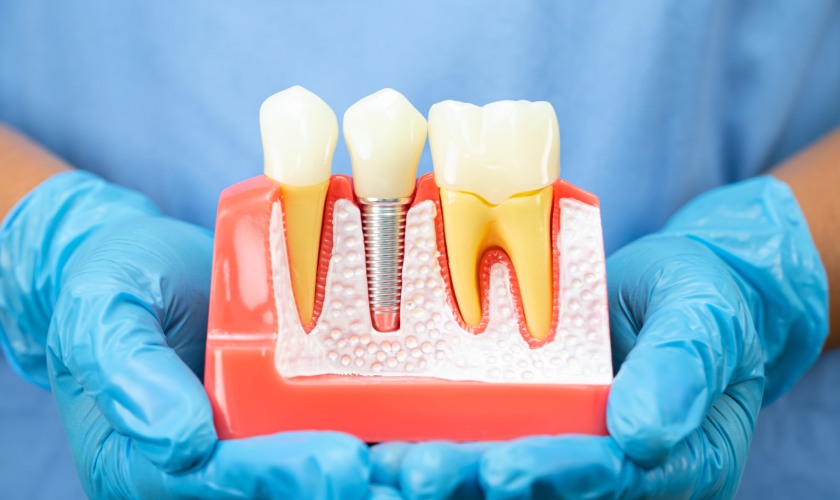
Dental health surprises patients when they realize dental implants will need bone grafting. Lost teeth, periodontal disease, or trauma can harm bones and make implants more challenging to treat. Clarity comes when Dr. Inna Trogan explains why bone grafting makes implants a success.
This blog explores bone grafting, addresses the necessity, describes procedures, and demonstrates long-term implants.
What Is a Bone Graft in Dentistry?
Bone grafting is the process of adding supportive material to restore or strengthen a weakened jawbone. The process creates solid foundations required for long-term implant stability.
Options may include natural bone from the patient, donor sources, or synthetic substitutes. Each method replaces volume and keeps dental implants securely in the jawbone structures.
Why Bone Health Is Important for Dental Implants
Dental implants rely on the natural osseointegration process. This is where the implant becomes securely anchored into the jawbone, with a solid foundation similar to a natural tooth root. Without this bond, implants cannot stabilize. If the bone is too weak or too thin, the implant will not be able to adhere. This, as time passes, can lead to loosening, discomfort, or even loss of the implant.
A healthy bone gives stability, strength, and security when chewing, smiling, or speaking. Healthy bone also maintains everything in its proper place by preventing nearby teeth from shifting out of position.
If your jawbone is thick and full enough, dental implants in Brooklyn are good for decades if they are well-maintained. In essence, the integrity of your bone directly impacts the success and comfort of your implants in the long run.
When Is a Bone Graft Necessary?
A bone graft is often necessary when your jaw lacks adequate bone to support implants. One common reason is the delayed placement of implants following tooth loss. Without stimulation from a tooth root, the bone slowly erodes over time, and that is why grafting must be performed before dental implants.
Gum disease is also a factor, as it causes ongoing bone loss that undermines support. In the case of accidents or injuries with trauma, jawbone parts can be lost or broken and must be rebuilt. Ongoing infections from neglected dental issues can also destroy bone. Bone deficiencies can also be due to gum disease since the bone continues to get weaker over time.
For example, a patient who lost a molar years back or a patient with severe gum disease may need a graft initially before proceeding. Such instances serve to highlight how bone grafting stabilizes and makes implants accessible to even more patients.
What to Expect During a Bone Graft Procedure
The process begins with consultation, examination, and diagnostic imaging for accuracy. Graft material is placed into the jaw by dentists to support weak bone sections. Healing lasts for several months, and bone integration is needed before implant placement.
Some instances involve grafting and implants together and reduce timelines. Anesthesia, reassurance, and new techniques make patients relaxed during dental implant preparation.
Benefits of Bone Grafting Before Implants
Bone grafting enhances implants and reduces failure risks significantly. A healthier jawbone facilitates better bite function and makes dental implants in Brooklyn more reliable.
Patients avoid facial collapse, appearance is preserved, and premature aging is prevented. Improved stability gives implants a natural feel and boosts long-term confidence. Grafts maintain facial profile and ensure both health and aesthetics with implants.
Dr. Inna Trogan’s Perspective
Dr. Inna Trogan points out that dental implants require good bone support to succeed. Her evaluations focus on identifying which patients may require bone grafting before implants can be placed. She uses the latest techniques that make treatment from start to finish comfortable and predictable.
Patients benefit from her careful planning and gain confidence that their implants will remain secure. Her philosophy centers on long-term oral health, natural esthetics, and stable results that improve everyday living.
Bone grafting is paramount to the success of modern dental implants. Extra support patients require to achieve healthier, more durable results with implants.
Dr. Inna Trogan reassures patients that bone grafting remains common and highly successful. Schedule your consultation today and learn if bone grafting is a step in your road to dental implants.
